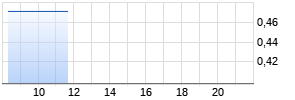
International Tower Hill Mines Announces Optimization Study Results Showing Improved Livengood Gold Project
PR Newswire
VANCOUVER, Sept. 8, 2016
Pre-Feasibility Study Completed for Optimized Project Configuration
VANCOUVER, Sept. 8, 2016 /PRNewswire/ - International Tower Hill Mines Ltd. ("ITH" or the "Company") (TSX: ITH; NYSE-MKT: THM) today announced the results of a Pre-Feasibility Study (the "PFS") on an optimized configuration for its Livengood Gold Project (the "Project") located near Fairbanks, Alaska. The engineering optimization studies incorporated in the PFS evaluated several scenarios, ultimately selecting a project that will process 52,600 tons per day and produce 6.8 million ounces of gold over 23 years. This improved configuration has reduced the capital costs ("CAPEX") by 34% or $950 million to $1.84 billion, the process operating cost ("process OPEX") by 28% or $2.97 per ton to $7.48 per ton, and the all-in sustaining costs by 16% or $242 to $1,263 per ounce, all as compared to the 100,000 tons per day project evaluated in the September 2013 Feasibility Study (the "FS"). All dollar figures in this news release are stated in US Dollars.
"We are pleased that our Optimization Study has resulted in lower CAPEX and OPEX costs projected over a 23 year mine life. Livengood's fundamentals are compelling, with a substantial gold resource, favorable jurisdiction, proximity to infrastructure and great leverage to the gold price. We are committed to advancing our basic engineering and metallurgical work to further de-risk the project and prepare for future permitting" said Tom Irwin, CEO.
Pre-Feasibility Study Overview
The Project configuration evaluated in the PFS remains a conventional, owner-operated surface mine that will utilize large-scale mining equipment in a blast/load/haul operation. Mill feed would be processed in a 52,600 tons per day comminution circuit consisting of primary and secondary crushing, wet grinding in a single semi-autogenous (SAG) mill and single ball mill followed by a gravity gold circuit and a conventional carbon in leach (CIL) circuit.
Lower CAPEX was achieved by a reduction in tonnage from 100,000 to 52,600 tons per day, elimination of two previously planned fresh water supply reservoirs due to the inclusion of a fresh water supply from a local aquifer, elimination of a permanent accommodations camp as a result of the planned daily transport of workers to the mine site during operations, changes in project execution strategy for the placement of large development earthworks using mine pre-production material by owner instead of contractor and design changes to focus on bulk fills instead of cut/fills during construction.
Lower OPEX was achieved through mining, process, and G&A optimization as described below.
Mine design changes that lowered costs include a more direct haul route to the primary crusher and steeper pit slopes in the early phases. Changes that increased costs were higher drill and blast costs for enhanced blast fragmentation to optimize mill throughput.
Mill configuration changes that contributed to overall reduction in CAPEX and OPEX include the addition of secondary crushing ahead of the SAG mill for more efficient use of power, inclusion of a single line SAG/ball mill configuration, and simplification of the mill foundation and pebble re-grind circuit. Metallurgical studies completed since 2013 support process OPEX reduction through a combination of increasing grind size from p80 90 micron to p80 180 micron, reducing leach circuit retention time from 32 to 24 hours, and reducing reagent consumption per ton. Lower power and reagent costs, based on updated data, also contributed to a reduction in OPEX.
Total G&A costs went down due to reduced corporate overhead estimates based on current data, but went up on a unit basis due to lower throughput.
Next Steps and Opportunities
Results to date indicate that further work is warranted in order to continue to optimize the Project, such as improved resource modeling that could potentially enhance head grades and improvement to the mine plan to reduce CAPEX and OPEX.
The metallurgical tests completed to date indicate that there are further opportunities to improve overall gold recovery. Subject to available financing, work will continue to optimize flowsheet and reagent consumption to maximize recovery, confirm the grind/recovery relationships, refine the process OPEX, and thereby further de-risk the Project.
The Company will also continue to advance environmental baseline work in support of future permitting in order to better position the Project for a construction decision when warranted by market conditions.
Pre-Feasibility Study Summary
The PFS was prepared by independent third party consultants and provides information on the optimized Project with lower throughput, updated resource estimate, and capital and operating cost estimates as compared to the project evaluated in the FS. The final version of the NI 43-101 technical report containing the PFS will be filed on SEDAR within the next 45 days and investors are urged to review this report in its entirety. As a result of the changes to the Project as evaluated in the PFS, including differences in the economic parameters applied to the geologic block model that resulted in a change in resources (gold price, recovery, CAPEX, and OPEX), the original project as evaluated in the FS is no longer considered current and the FS should therefore no longer be relied upon by investors.
The Company cautions that the PFS is preliminary in nature, and is based on technical and economic assumptions which would be further refined and evaluated in a full feasibility study. The PFS is based on an updated Project resource estimate effective as of August 26, 2016 using the same resource model as used in the FS.
The following is a summary of the material aspects and assumptions of the PFS. Investors are urged to review the complete NI 43-101 report following its filing on SEDAR for all details of the PFS.
The engineering design to estimate capital costs used in the PFS are within a -20%/+25% accuracy.
Project Location
The Project is connected by an existing paved highway to the city of Fairbanks, 70 miles to the southwest in central Alaska. The Project is located in an active mining district that has been mined for gold since 1914. The State of Alaska land use plan designates mining as the primary surface land use for the area in which the Project is located.
Infrastructure
The Project would include a lined tailings management facility, an administration office/shop/warehouse complex, and would also include construction of a 50-mile 230kV electrical transmission line to the mine site from the existing grid power near Fairbanks, Alaska. The total power demand is estimated to be 55MW.
Environmental and Community Relations
Eight continuous years of baseline environmental work continues to indicate that all aspects of the Project can be successfully and safely managed. The design of the tailings facility incorporates best practices including a lined rock fill structure with a lined tailings basin. The Project development team has had considerable experience working with Alaska's large mine permitting process and has a proven and respected track record of developing mining projects safely and in an environmentally sound manner. The Project has already and will continue to provide local economic opportunities with local access to a highly skilled and available work force. The Company is also working within Fairbanks and the nearby community of Minto to seek early input on the Project and to explore ways to maximize economic benefits to the local communities.
Summary of Results of the 52,600 Tons Per Day PFS and Comparison to 2013 FS
| OPERATING METRICS | 2016 PFS | 2013 FS | |
| Mill Throughput | 52,600 | 100,000 | tons/day |
| Head Grade – LOM | 0.71 | 0.69 | g/tonne |
| Head Grade – Year 1-5 | 0.88 | 0.83 | g/tonne |
| Gold Recovery – LOM | 75.3 | 78.4 | % |
| Mine Life | 23 | 14 | years |
| Total Ounces Produced | 6,763,900 | 7,893,800 | Troy ounces |
| Average Annual Production – LOM | 294,100 | 563,800 | Troy ounces |
| Average Annual Production – Year 1-5 | 378,300 | 681,700 | Troy ounces |
| Total Ore Processed | 432 | 501 | Million tons |
| Total Waste | 468 | 720 | Million tons |
| Annual Mining Rate | 54 | 95 | Million tons |
| Waste Rock to Mill Ore (tonnes) Ratio – LOM | 1.3:1 | 1.4:1 | Waste to Ore |
| Low Grade Stockpile Maximum Size | 145 | 93 | Million tons |
| FINANCIAL METRICS | 2016 PFS | 2013 FS | |
| CAPEX – Initial | 1.84 | 2.79 | $Billion |
| CAPEX – Sustaining | 665 | 667 | $Million |
| Reclamation & Closure | 342 | 353 | $Million |
| OPEX – Mining Werbung Mehr Nachrichten zur International Tower Hill Mines Aktie kostenlos abonnieren
E-Mail-Adresse
Bitte überprüfe deine die E-Mail-Adresse.
Benachrichtigungen von ARIVA.DE (Mit der Bestellung akzeptierst du die Datenschutzhinweise) -1  Vielen Dank, dass du dich für unseren Newsletter angemeldet hast. Du erhältst in Kürze eine E-Mail mit einem Aktivierungslink. Hinweis: ARIVA.DE veröffentlicht in dieser Rubrik Analysen, Kolumnen und Nachrichten aus verschiedenen Quellen. Die ARIVA.DE AG ist nicht verantwortlich für Inhalte, die erkennbar von Dritten in den „News“-Bereich dieser Webseite eingestellt worden sind, und macht sich diese nicht zu Eigen. Diese Inhalte sind insbesondere durch eine entsprechende „von“-Kennzeichnung unterhalb der Artikelüberschrift und/oder durch den Link „Um den vollständigen Artikel zu lesen, klicken Sie bitte hier.“ erkennbar; verantwortlich für diese Inhalte ist allein der genannte Dritte. Andere Nutzer interessierten sich auch für folgende News |



